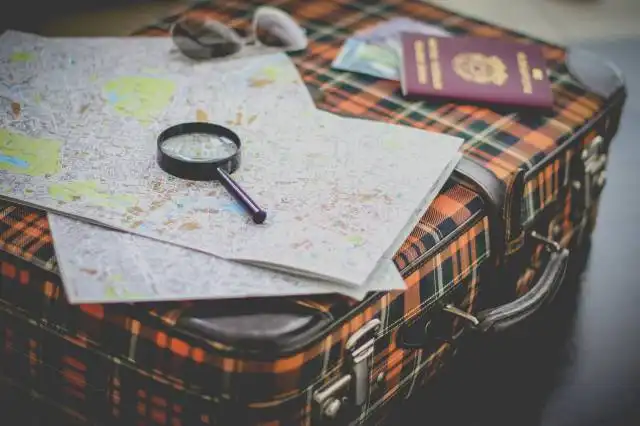Start a Bait & Tackle Shop
Reeling in Success and Community: More Than Just Bait and Tackle
| Updated


BAIT & TACKLE SHOP
So, you fancy setting up a shop selling bait and tackle? Brilliant! A bait & tackle shop caters to the passionate crowd of fishing enthusiasts, supplying them with all the necessary equipment, from rods and reels to hooks and live bait. It's not all leeches and worms though, imagine your cozy shop as the go-to hub where like-minded anglers share epic tales of 'the one that got away' over a fresh display of tackle. Your success won't solely hinge on your bait; it's also about reeling in a community!
Jump to Business Plan
RELATED BUSINESS IDEAS
Browse ALL Hospitality & Leisure Ventures Business Ideas
Discover Your Perfect Domain
Unlock the door to your online success with our hand-picked selection of premium domain names. Whether you're starting a new venture or rebranding an existing one, the right domain can set the tone for your digital presence. Browse through our curated list, each with its unique potential to enhance your brand's visibility and credibility.
BAIT & TACKLE SHOP MINI BUSINESS PLAN
This a quick reality check to help you identify the strengths and weaknesses of your business concept before you dive in.
Quick Facts - Bait & Tackle Shop
Expected Percent Margins:
- Gross Margin: 30-45%
- Net Profit Margin: 5-15%
Earnings Expectations:
- Daily Earnings: $50 - $150
- Weekly Earnings: $350 - $1050
- Monthly Earnings: $1500 - $4500
- Annual Earnings: $18,000 - $54,000
Actions Needed to Achieve These Numbers:
Inventory Management:
- Initial Investment: At least $10,000 - $25,000 to secure a diverse and quality range of bait, tackle, and fishing equipment.
- Supplier Relationships: Develop relationships with reliable suppliers or drop shippers who can offer quality fishing gear at competitive prices.
Marketing and Customer Acquisition:
- Community Engagement: Participate in local fishing tournaments, sponsor fishing events in your area, and partner with fishing clubs to promote your shop.
- Online Presence: Create a website and social media channels to reach more customers and provide information on the latest fishing gear and bait selection in your store.
Store Operations:
- Staff Knowledge: Your staff should have an excellent knowledge about fishing techniques, local fish species, and the best gear to recommend to customers.
- Store Hours: Open store hours that align with fishing peak times — early mornings, evenings and weekends.
Cost Control:
- Rent: Select a store location where rent is no more than 10% of expected sales. Consider a location near popular fishing areas.
- Operating Expenses: These include utilities, maintenance, and insurance. Aim to keep these as low as possible.
These estimates are rough approximations and can differ based on geographical location, local market conditions, and unique business strategies. Always do your own research and consult with a financial advisor to get accurate numbers.
NOT WHAT YOU HAD IN MIND? Here are more ideas



Browse ALL Hospitality & Leisure Ventures Business Ideas
Grab Your Business Website Name
Before you get caught up in the whirlwind of setting up your business, invest in a domain name. It's a small but significant step that lays the foundation for your brand and makes it easier for customers to find and trust you. Just like you wouldn't build a house without securing the land first, don't build a business without securing your domain name.
"Why? Can't that wait?" Here's why it shouldn't
Thesis statement
This article will provide a comprehensive guide on how to start a bait & tackle shop in 9 steps, including understanding the startup and ongoing expenses, naming the business, and learning how to make money.
Step 1: Determine if the Business is Right Endeavor
Breakdown of startup expenses
Starting a bait and tackle shop requires a significant amount of capital. Before beginning the process, it is important to understand the startup expenses associated with the business. These expenses may include the cost of the building and property, the cost of equipment, the cost of inventory, and the cost of permits and licenses. Additionally, depending on the location, there may be additional expenses such as the cost of advertising and the cost of hiring employees. It is important to understand all of the startup expenses associated with the business before beginning the process.
Breakdown of ongoing expenses
In addition to the startup expenses, it is important to understand the ongoing expenses associated with the business. These expenses may include the cost of inventory, the cost of utilities, the cost of insurance, and the cost of employee wages. Additionally, depending on the location, there may be additional expenses such as the cost of advertising and the cost of maintaining the building and property. It is important to understand all of the ongoing expenses associated with the business before beginning the process.
Examples of ways to make money
There are a variety of ways to make money with a bait and tackle shop. The most common way is to sell bait and tackle supplies to customers. Additionally, the shop may offer services such as fishing lessons, fishing charters, and guided fishing trips. The shop may also offer additional services such as bait and tackle repairs, fishing equipment rentals, and fishing gear rentals. Additionally, the shop may offer additional items such as snacks, drinks, and souvenirs. It is important to understand all of the ways to make money with the business before beginning the process.
Step 2: Name the Business
Choosing the right name for your bait and tackle shop is an important step in the process of starting your business. It should be something that is memorable, reflects the type of business you are running, and is easy to spell. It should also be something that is unique and stands out from other businesses in the area. When choosing a name, consider the type of bait and tackle you will be selling, the location of your business, and the target audience you are trying to reach. Additionally, it is important to make sure that the name you choose is not already taken by another business. Researching the availability of the name is an important step in the process. You can do this by searching the internet and checking with the local government to make sure the name is not already in use.
Registering the business name
Once you have chosen a name for your bait and tackle shop, the next step is to register the business name. This is an important step in the process of starting a business as it ensures that the name is legally protected. Depending on the state you are in, you may need to register the name with the Secretary of State or the Department of Revenue. Additionally, you may need to register the name with the county or city clerk. This process can take some time, so it is important to plan ahead and make sure you have all the necessary paperwork and fees ready. Additionally, you may need to register the name with the United States Patent and Trademark Office in order to protect the name from being used by another business.
Creating a logo
Once you have registered the name of your bait and tackle shop, the next step is to create a logo. This is an important step in the process of starting a business as it helps to create a recognizable brand. When creating a logo, consider the type of bait and tackle you will be selling, the target audience you are trying to reach, and the overall look and feel of the business. Additionally, it is important to make sure the logo is unique and stands out from other businesses in the area. You can create a logo yourself or hire a professional designer to do it for you. Additionally, you may need to register the logo with the United States Patent and Trademark Office in order to protect it from being used by another business.
Step 3: Obtain Necessary Licenses and Permits
Step 3 of starting a bait and tackle shop is to obtain the necessary licenses and permits. Before doing so, it is important to research local regulations to make sure the business is compliant with all applicable laws. Depending on the location, this may include a business license, a fishing license, a sales tax permit, and a health permit. It is important to make sure that all of the necessary licenses and permits are obtained before opening the business.
In addition, it is important to research any local zoning laws that may apply to the business. Depending on the location, there may be restrictions on the type of business that can be operated in a particular area. Additionally, there may be restrictions on the hours of operation and the number of employees that can be hired.
Finally, it is important to research any federal regulations that may apply to the business. Depending on the type of bait and tackle shop, there may be regulations related to the sale of certain types of products. For example, if the shop sells firearms, there may be additional regulations that must be followed. Additionally, if the shop sells live bait, there may be regulations related to the sale of live animals.
Obtaining the necessary licenses and permits is an important step in starting a bait and tackle shop. Before doing so, it is important to research local, state, and federal regulations to make sure the business is compliant with all applicable laws. Additionally, it is important to research any local zoning laws that may apply to the business. Finally, it is important to research any federal regulations that may apply to the business. Once all of the necessary licenses and permits have been obtained, the business can move forward with the next steps in the process.
Step 4: Choose a Location
Choosing the right location for a bait and tackle shop is essential to the success of the business. The location should be in an area that is easily accessible to potential customers, and should be close to a body of water. Additionally, the location should have plenty of parking available, and should have enough space to accommodate the shop and any necessary storage. It should also be in an area that is zoned for commercial use.
Researching potential locations
Once the ideal area has been identified, it is important to research potential locations. This should include researching the local laws and regulations, as well as the competition in the area. Additionally, it is important to research the demographics of the area, in order to determine if the shop will be able to draw in enough customers. It is also important to research the cost of rent in the area, as this will be a major factor in determining the success of the business.
Securing a location
Once the ideal location has been identified, it is important to secure the location. This should include contacting the landlord or property owner, and negotiating a lease agreement. Additionally, it is important to make sure that the lease agreement includes all of the necessary provisions, such as the length of the lease, the rent amount, and any other necessary provisions. It is also important to make sure that the lease agreement is in compliance with all local laws and regulations.
Step 5: Design the Shop
Design of the Shop
When designing the shop, it is important to consider the layout and the overall look of the store. It is important to create a space that is inviting and comfortable for customers. The shop should be organized and efficient, and should include a counter, shelves, and other necessary equipment. It is also important to consider the lighting and the overall atmosphere of the shop.
Necessary Equipment
In order to run a successful bait and tackle shop, there is certain equipment that is necessary. This includes a cash register, scales, rods, reels, lures, bait, tackle boxes, and other items related to fishing. It is important to have a wide selection of items in order to appeal to a variety of customers. Additionally, it is important to have a good quality sound system in order to provide customers with a pleasant shopping experience.
Step 6: Purchase Inventory
Types of inventory
When starting a bait and tackle shop, it is important to purchase the right inventory. The types of inventory that should be purchased include live bait, lures, rods, reels, and tackle boxes. It is also important to stock items such as fishing line, hooks, sinkers, and other items that are necessary for fishing. Additionally, it is important to stock items such as sunglasses, hats, and other items that are related to fishing.
Sources for purchasing inventory
When purchasing inventory for a bait and tackle shop, it is important to find reliable sources. One source for purchasing inventory is to buy directly from manufacturers. This can be done by contacting the manufacturer and setting up a wholesale account. Another source for purchasing inventory is to buy from a distributor. Distributors typically have a large selection of inventory and can provide discounts for bulk orders. Additionally, it is possible to purchase inventory from other bait and tackle shops that are going out of business. This can be a great way to get inventory at a discounted price. Finally, it is also possible to purchase inventory from online retailers. This can be a great way to find unique items that are not available in local stores.
Step 7: Market the Business
Once the business is open, it is important to market the shop to potential customers. This can be done through a variety of methods, such as advertising in local newspapers, creating a website, and creating social media accounts. Additionally, offering discounts and promotions to customers can help to draw in more business. It is also important to build relationships with local fishing clubs and organizations, as they can be a great source of referrals.
Networking
Networking is another important aspect of marketing a bait and tackle shop. It is important to reach out to other businesses in the area and build relationships with them. This can include attending local events, such as fishing tournaments and boat shows, and offering discounts to customers who come from other businesses. Additionally, it is important to join local fishing clubs and organizations, as this can help to build relationships with potential customers.
Advertising
Advertising is another important aspect of marketing a bait and tackle shop. This can include creating advertisements in local newspapers, radio, and television. Additionally, creating a website and social media accounts can help to reach potential customers. It is also important to create promotional materials, such as flyers and brochures, to distribute to potential customers.
Promotions
Offering promotions and discounts to customers can be a great way to draw in more business. This can include offering discounts on certain items, such as bait and tackle, or offering special discounts to customers who come from other businesses. Additionally, offering discounts to members of local fishing clubs and organizations can be a great way to build relationships with potential customers.
Step 8: Hire Employees
When hiring employees, it is important to consider the type of employees you need and the skills they should possess. Consider the type of customer service you want to provide and the type of tasks you will need your employees to do. You may need to hire employees with experience in the fishing industry, retail, or customer service. You may also need to hire employees with knowledge of the local area, such as fishing spots and regulations. Additionally, you should consider the cost of hiring and training employees.
Finding the right employees
Once you know what type of employees you need, you can begin looking for them. You can start by posting job openings in local newspapers, online job sites, and on social media. You can also ask other local businesses if they know of anyone who might be interested in the job. Additionally, you can attend job fairs and networking events to find potential employees.
Interviewing potential employees
Once you have a list of potential employees, you can begin the interview process. During the interview, you should ask questions about their experience, skills, and knowledge. You should also ask questions about their availability and willingness to work. Additionally, you should ask questions about their attitude and how they would handle customer service situations.
Making the hiring decision
After the interviews are complete, you can make the hiring decision. Consider the skills and experience of each candidate, as well as their attitude and availability. Additionally, consider the cost of hiring and training each candidate. Once you have made your decision, you can make the job offer and begin the onboarding process.
Step 9: Track Finances
The final step in starting a bait & tackle shop is to track finances. It is important to keep track of all income and expenses to ensure the business is profitable. There are a variety of methods for tracking finances, such as using a spreadsheet, creating a budget, or using accounting software. Spreadsheets are a great way to track income and expenses, as they allow for easy comparison of past and current financial data. Creating a budget can also be helpful in tracking finances, as it allows for a better understanding of where money is being spent and how much is being earned. Accounting software is also a great way to track finances, as it allows for more detailed tracking of income and expenses.
Tips for staying organized
In order to stay organized and ensure accurate financial tracking, it is important to keep all financial documents in one place. This can be done by creating a filing system or using a cloud-based storage system. It is also important to keep all receipts and invoices in one place, as these can be used to track expenses. Additionally, it is important to create a system for tracking payments and invoices, as this will help ensure that all payments are made on time. Finally, it is important to keep all financial records up to date, as this will help ensure accuracy when tracking finances.
EXPLORE MORE CATEGORIES
Browse ALL Business Idea Categories
TAKE THE NEXT STEPS










